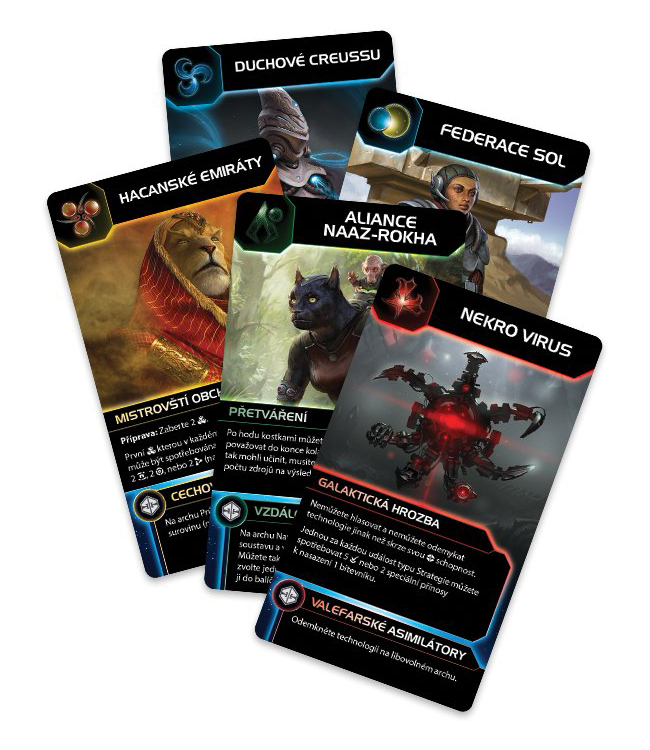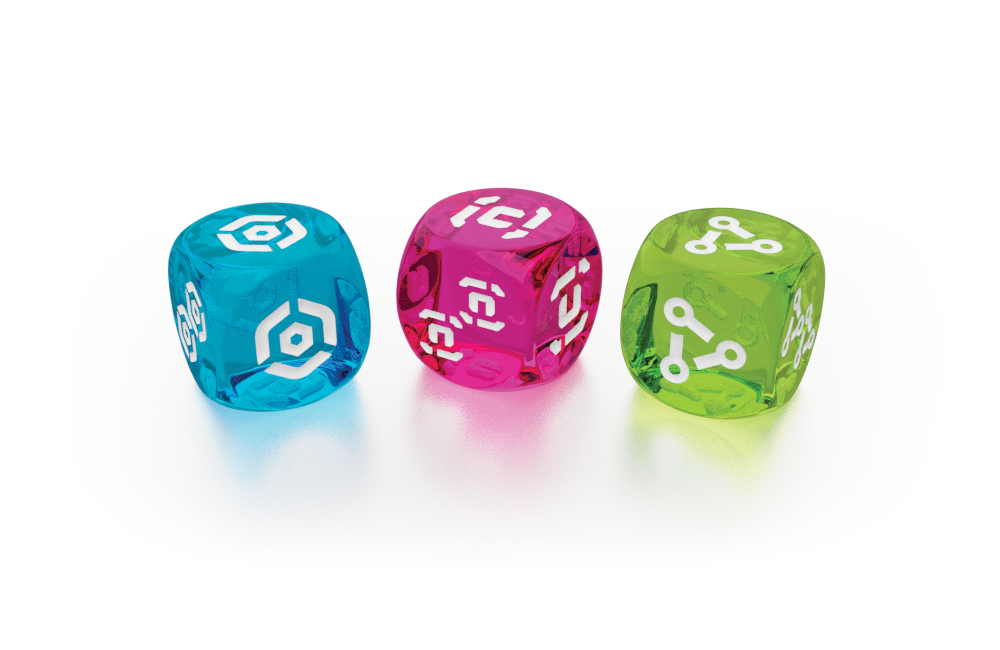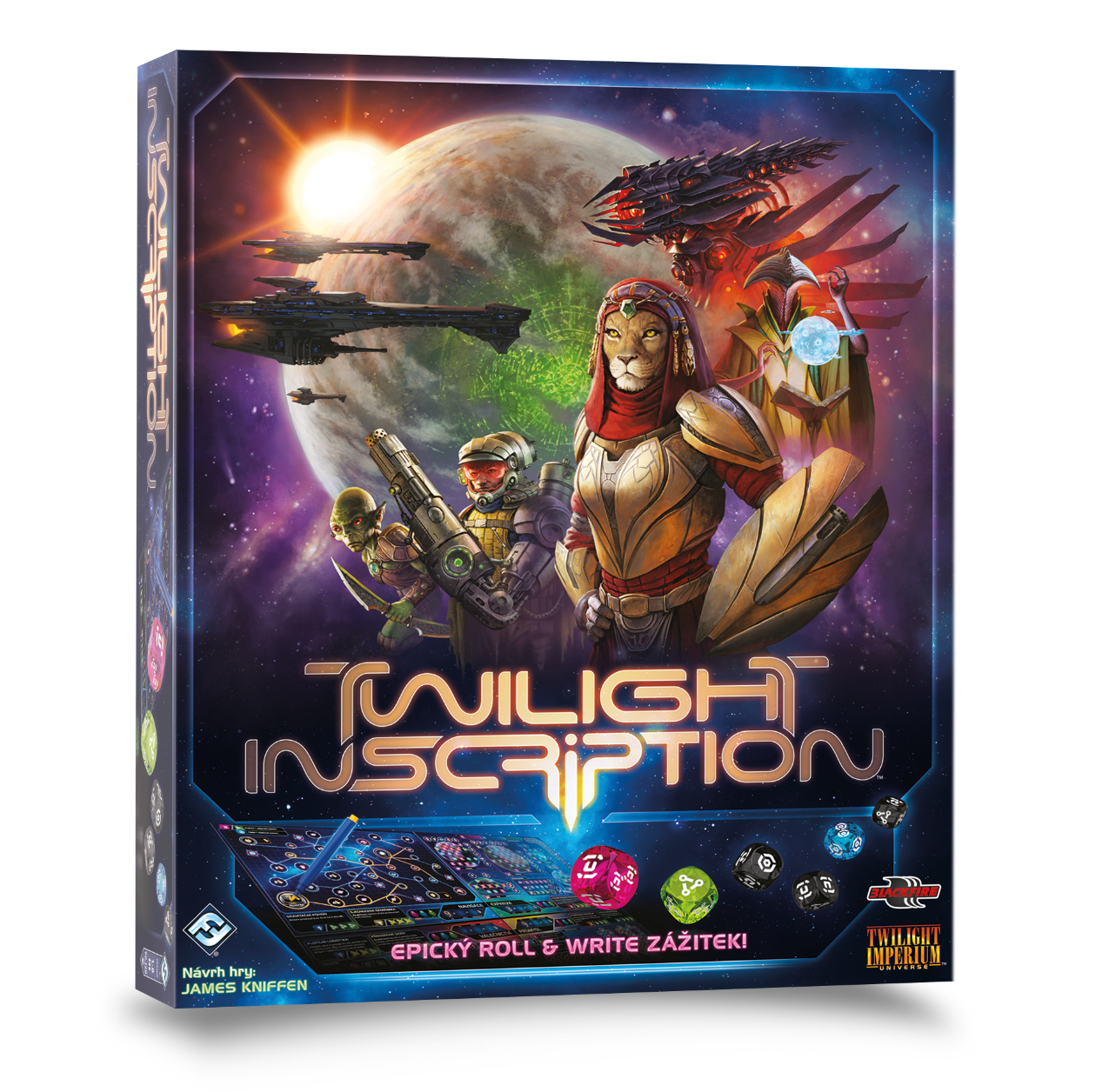Twilight Imperium is one of the most massive boards. If you’re looking for something smaller but still extensive, there’s an alternative in the form of Twilight Inscription. Instead of a ton of models, it gives you blocks, markers, and erasable sheets. We will talk about how all this works in the following paragraphs.
- Number of players: 18
- Game time: 90 – 120 minutes
- Price: 1502 CZK (Tlama Games)
- Age: 14+
The universe needs its ruler again in Twilight Inscription
The Empire has fallen. It is a time of strife as the remnants of the galactic empire begin to fight over who will claim the cosmic throne and rule the universe. There are a total of twenty-four playable factions for players to take on. At the very beginning, they get the opportunity to choose one of three randomly selected ones. As in Stellaris, the menu is truly varied, allowing you to reach the deeply religious humanoid Falcons, also known as the Silver Squadron, the trade-oriented Hakan Emirates, or the telepathic Naal Community.
Each faction will offer you a specific description, thanks to which you can create certain relationships with it. But that’s not all. They all also have a couple of unique abilities/skills that often relate to how that group is displayed. The Mentak coalition, for example, is presented as a relatively aggressive group, giving it an obvious military orientation. For example, I found the Necro virus quite interesting, which, while a galactic threat, cannot vote or discover technology except through its powers.
Once you’ve made your choice, there’s nothing stopping you from picking up four player sheets covering navigation, expansion, industry, and war. The boards are designed in such a way that the player can interact with them as much as possible in Twilight Inscription using markers. Due to the way they are handled, I would say the replayability of this piece is virtually unlimited. The only thing that you will have to buy in addition after a while is markers, but even with them the durability seemed very decent to me. To make matters worse, all boards offered are also available in different versions, so starting conditions are often a matter of chance.
The game itself in Twilight Inscription is played in such a way that you actually start each round by flipping over an event card. Here you score well from the first point, given that at this stage the figure of the Speaker is actively involved, whose job is to make the whole game as simple as possible, so it is good if someone really knows the rules well. becomes him. The range of events is as varied as the range of factions themselves, so the player can look forward to wars, political clashes and industrial expansion.

Interestingly, all, or at least most, cards always involve spending a certain amount of resources. You draw them on your game sheet. In most cases, the speaker subsequently rolls the dice, which are handled very visually. In the early stages of the game, you’re mostly working with a trio of black dice. You then only work on the rest when you reveal them on your game sheet using focus benefits. Orientation can be very varied.
However, you can later work with the values on the die as you wish. They can be used to expand your worlds, go to war, conquer new planets, or work in industries that also need your attention. For example, in Twilight Inscription I really liked the expansion by world, due to the fact that after blocking an entire row, you get the benefits associated with it. Once you have distributed all the points, the round ends and you can draw another event card and start the next part of this game with it.

The game ends when you manage to draw a Tron card to take over the Twilight Inscription. In this case, not only a war will begin, but also a recalculation of all available points, which will generally determine who will rule the galaxy, and who, on the contrary, will get the role of “subordinates”. The recalculation here is due to the fact that you have the opportunity to calculate points for all sheets. By focusing on expanding the world, you can expect the game to reward you for population, while if you focus on war, you will receive points for the combat power you accumulate. There are many options. However, you score across all boards, so it doesn’t matter which path you choose.
Twilight Inscription is a great choice for strategy lovers.
Stellaris is a masterpiece that you probably wouldn’t place on a table if it were brought into the world of board games. In the case of Twilight Inscription, you get a little more modest strategy, but that doesn’t mean this game isn’t worth your attention. This is a powerful creation that forces the player to constantly think about which direction to target one of the twenty-four civilizations that he can choose at the beginning.
Here you need to take into account the fact that more or less all the action happens on your sheets. Without a doubt, I have to evaluate the way the cubes are processed. Visually they are at least as successful as Tim Burton’s Stole Christmas. If you’re looking for a game where you’ll build a war and explore the universe, then this might be the perfect choice for you.
We would like to thank Czech distributor Blackfire for providing us with a copy of Twilight Inscription.
Source :Indian TV

